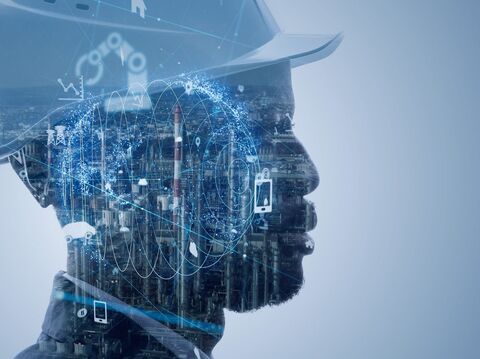Why Indian Brands Are Switching To D2C Business Model

The Indian market, traditionally dominated by intermediaries like wholesalers and retailers, is undergoing a seismic shift with the rise of the Direct-to-Consumer (D2C) business model. Brands across various sectors, from established players to emerging startups, are rapidly adopting this approach. But what’s driving this widespread D2C adoption? It offers a win-win situation: brands can forge direct relationships with consumers and reap higher profit margins by bypassing middlemen, while consumers enjoy a more personalized and transparent shopping experience.
For the Indian consumer, it promises a more personalised, transparent shopping experience. The D2C model is not merely a trend but a significant shift altering India's business fundamentals. As technology advances and consumers become increasingly tech-savvy, the D2C revolution is poised to shape the future of the Indian market.
The D2C Revolution: Why It's Shaking Up India's Traditional Marketplaces
The Indian marketplace has long been a complex ecosystem involving various intermediaries such as wholesalers, retailers, and brokers. But a disruptive wave is sweeping through this traditional system in the form of D2C, or Direct-to-Consumer. With the D2C model, brands can eliminate these middlemen, providing a more streamlined and personalised experience for the consumer. Urban populations in India, increasingly tech-savvy, find the simplicity and transparency of D2C compelling. The model ensures higher profit margins for businesses and fosters an environment where customer-centric strategies can flourish.
What Exactly is D2C? And Why You Should Care if You're in India
D2C, or Direct-to-Consumer, is a business model where manufacturers or brands engage directly with consumers, eliminating intermediaries. This resonates particularly well in India, where digitally savvy consumers seek authentic brand experiences. The direct relationship allows for more personalized service and often results in cost savings for consumers, making products more accessible. In a crowded marketplace, D2C enables faster adaptation to consumer preferences, benefiting both brands and consumers.
Cracking the D2C Business Model: The Secret Sauce Behind Its Allure
The allure of D2C doesn't just stem from cost-saving benefits. In the Indian context, it also involves leveraging digital platforms and advanced data analytics for precisely targeted, personalised marketing campaigns. Brands can use real-time consumer feedback to launch new products swiftly and efficiently. The D2C model offers unparalleled agility, which is particularly beneficial in India's fast-paced and highly competitive market. Thus, it's not merely about removing the 'middle man' but crafting an enhanced, data-driven, and personalised brand experience.
From B2C to D2C: The Strategic Pivot That's Redefining Indian Commerce
The shift from Business-to-Consumer (B2C) to Direct-to-Consumer (D2C) is more than just a buzzword in India's evolving commercial landscape. It signifies a strategic pivot allowing Indian companies to interact directly with their customers. By doing so, brands can tailor their marketing strategies, promotional offers, and even products to suit their consumer base better. Furthermore, this direct communication fosters stronger relationships, paving the way for loyalty programs and improved after-sales service.
The Digital Frontiers: How D2C Brands in India Are Rewriting the Rulebook
D2C brands in India are not just adapting to the digital age; they have new benchmarks. Leveraging state-of-the-art technologies like Augmented Reality (AR) for product visualisation, chatbots for customer service, and AI for personalised shopping experiences, these brands are setting a new standard. Given India's burgeoning internet population, the country is ideal for such digital experimentation. Companies are not merely surviving in this digital age but thriving, owing to their willingness to innovate and adopt.
The Competitive Edge: Why D2C Beats B2C, Especially in India
The D2C model has a competitive edge over the traditional B2C model in India due to its effective use of consumer data for tailored offerings.
- Data Utilization: D2C creates a direct line to consumers, simplifying the collection of valuable data. This helps brands understand buying behavior in a nuanced way.
- Consumer Preferences: Using collected data, D2C brands can predict consumer wants, crucial in India’s diverse market.
- Swift Adaptation to Trends: The quick feedback loop in D2C allows brands to rapidly adapt to market trends, providing significant agility in India’s fast-paced market.
- Deep Resonance: This data-driven approach helps D2C brands create products and campaigns that resonate deeply with varied consumer segments, offering a competitive edge over B2C models.
Real Stories, Real Success: Meet the Top D2C Brands Dominating the Indian Market
In the thriving landscape of India's D2C market, brands like Bewakoof, Mamaearth, and Licious stand out. They've tapped into the power of understanding local preferences while leveraging digital capabilities to engage directly with consumers. These brands have masterfully used data analytics and digital marketing, setting new standards for success in the Indian D2C space.
Survival of the Fittest: How D2C Business Models Are Crushing Traditional Retail in India
The traditional retail sector, burdened by high overheads and the presence of multiple intermediaries, needs to gain ground in the more agile D2C model. Indian consumers are increasingly drawn to the fresh and personalised experiences that D2C brands can offer. The model’s ability to adapt quickly to consumer preferences gives it a competitive edge, making traditional retail look increasingly outdated.
Local Roots, Global Reach: The Rise of D2C Brands that Originated in India
Indian D2C brands are transcending their local origins to establish a global footprint. Here's a look at some such brands and the attributes that make them relevant on a worldwide scale.
Mamaearth: Originating in India, Mamaearth has made its mark by specialising in natural and chemical-free skincare products. With an expanding global presence, they have successfully tapped the increasing demand for organic beauty products worldwide.
BoAt: Known for its consumer electronics, BoAt started in India but now competes with international brands. Their high-quality, affordable audio devices resonate with consumers across the globe.
Bewakoof: Initially popular among Indian youth for its quirky and affordable fashion, Bewakoof is extending its reach globally. The brand has attracted international consumers by offering trendy clothing that appeals to a broad demographic.
Cure.fit: This Indian D2C brand has revolutionised health and fitness with its tech-driven approach. They're scaling up internationally by offering virtual and physical wellness solutions.
The Man Company: Offering various men’s grooming products, The Man Company has successfully entered international markets. They are drawing global customers with their high-quality, natural ingredients.
What's Next for D2C in India: Trends and Forecasts You Can't Afford to Ignore
The D2C model in India is more than just a current trend; it's shaping the future of how businesses and consumers interact. Trends to look out for include deeper integration of AI technologies, the rise of localised brands focusing on niche markets, and further streamlining consumer buying experience. As digital adoption grows in India, the possibilities for innovation within the D2C sector are boundless, making it a crucial area to watch in the coming years.
Conclusion
The D2C revolution in India is far more than just a shift in how products are sold; it's a monumental change in how we conceptualise the brand-consumer relationship. With a blend of technological innovation and a deep understanding of local consumer preferences, D2C is set to redefine the commercial ecosystem. This approach offers unprecedented advantages, from personalised customer experiences to agile business operations that can adapt to market trends in real-time. As we look to the future, D2C is not merely an option but an imperative for those who wish to thrive in the ever-evolving landscape of Indian commerce. The momentum is unstoppable, and the potential is boundless.
Ready to take your brand to new heights in this transformative landscape? GrowthJockey is your go-to partner for navigating the intricate intricacies of the D2C world in India, armed with data-driven strategies and tailored solutions. Don't be left behind; join the revolution.
FAQs:
1. How is D2C different from traditional retail?
Traditional retail has multiple intermediaries like wholesalers and retailers between the brand and the consumer. D2C cuts out these middlemen, creating a direct channel between brands and consumers. This results in higher profit margins for the companies and offers a more personalised experience for consumers.
2. Why is D2C gaining traction in India?
India has a booming internet population, making it easier for brands to connect directly with consumers. The tech-savvy audience is increasingly seeking more personalised and convenient shopping experiences. In this context, D2C aligns perfectly with these consumer preferences, thus gaining considerable traction.
3. Are there any success stories of D2C in India?
Indeed, homegrown brands like Bewakoof and Mamaearth are perfect examples of how D2C can be successful in India. These brands have successfully leveraged social media and data analytics to build a dedicated customer base and offer tailored products.
4. How do D2C brands in India leverage technology?
D2C brands in India are pushing the envelope when it comes to technology. They're utilising Augmented Reality for virtual try-ons and employing Artificial Intelligence for personalised shopping recommendations. This tech-savvy approach is revolutionising the consumer shopping experience.
5. What's the future for D2C in India?
The future of D2C in India looks extremely promising. As technology advances, expect to see even deeper integration of AI to understand consumer behaviour. Alongside, the emergence of more local brands focusing on niche markets will offer consumers a more diverse and streamlined buying experience.








